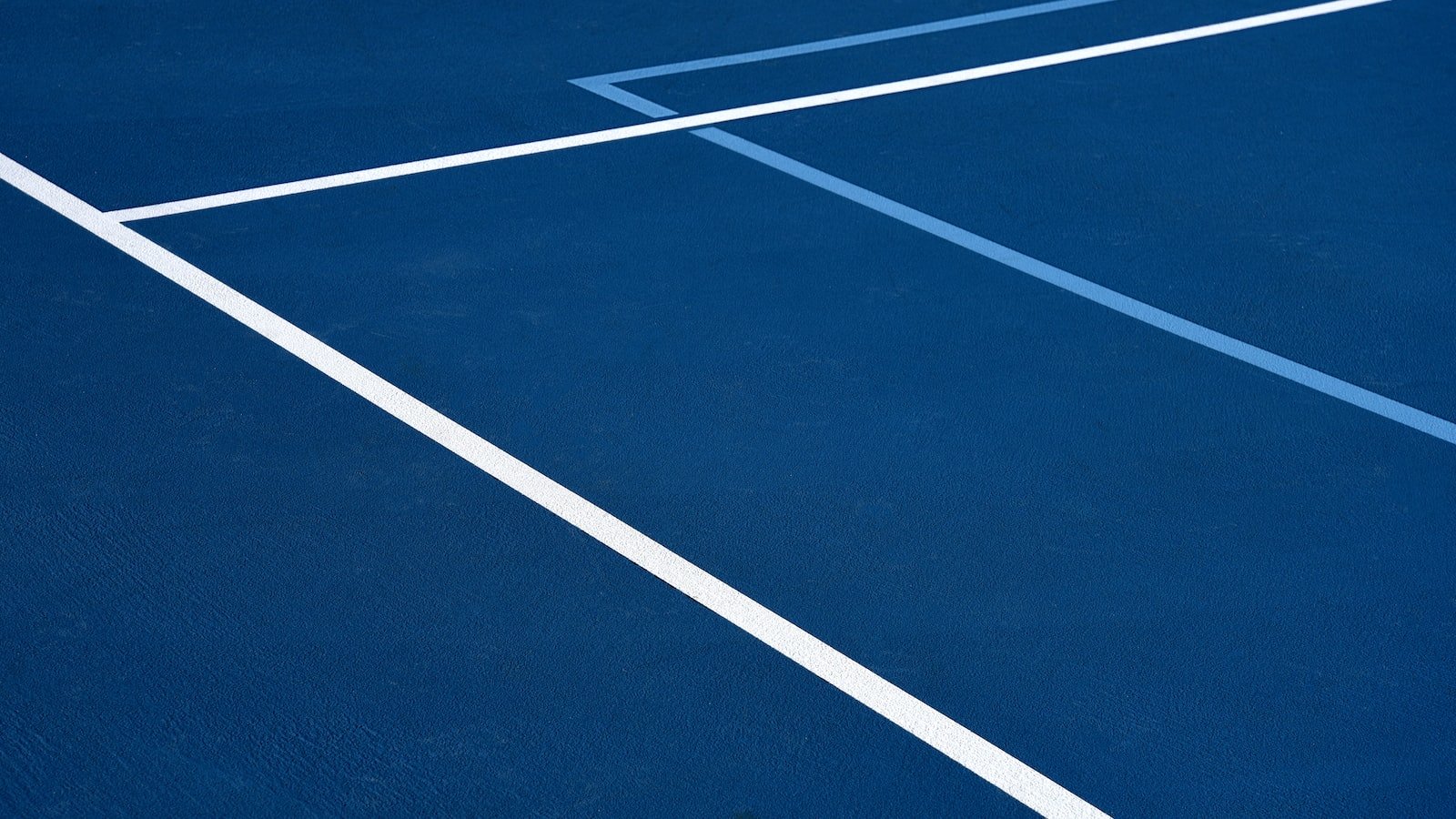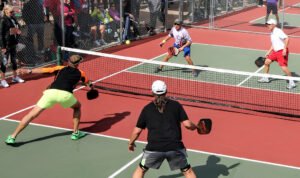With the rising popularity of pickleball, it is crucial to ensure that the game remains inclusive and accessible to all. While the focus may often be on the excitement and strategy of this fast-growing sport, the significance of providing accessible facilities, particularly pickleball courts, should not be overlooked. From beginners to seasoned players, people of all ages and abilities should be able to partake in matches, fostering a sense of community and promoting an active lifestyle. In this article, we will delve into the importance of accessibility in pickleball courts, examining how various adaptations and considerations can make this recreational activity open to everyone, regardless of their physical limitations. Whether you are an avid player or someone passionate about promoting equality and inclusivity, understanding the value of accessible pickleball courts is an essential step towards creating an inclusive space for all.
Table of Contents
- The Inclusivity Factor: Ensuring Accessibility in Pickleball Court Design
- Unveiling the Challenges: Identifying Barriers to Accessibility in Pickleball Courts
- Towards Inclusive Solutions: Strategies for Enhancing Accessibility in Pickleball Courts
- Designing with Everyone in Mind: Practical Recommendations for Accessible Pickleball Court Facilities
- Q&A
- Key Takeaways

The Inclusivity Factor: Ensuring Accessibility in Pickleball Court Design
When designing pickleball courts, it is paramount to prioritize inclusivity and ensure accessibility for players of all abilities. By designing courts with accessibility in mind, we can create a space that is welcoming and inclusive to everyone, regardless of their physical limitations. Here are some factors to consider when aiming for an all-inclusive pickleball court design:
- Playing Surface: It is crucial to have a smooth and level playing surface to prevent tripping hazards. The court surface should be durable and slip-resistant to accommodate players with mobility aids such as wheelchairs or walkers.
- Clear Pathways: Ensure that there are clear pathways leading to and around the pickleball courts. This allows players with wheelchair accessibility needs to move comfortably and independently.
- Net Height Adjustment: Having an adjustable net height option enables players of different ages and abilities to participate in the game. An adjustable net allows for modifications to accommodate wheelchair players or those with limited reach.
- Visual Contrasts: Incorporate visual contrasts on the court surface to assist players with visual impairments. Contrasting colors between the playing area and boundary lines can help improve visibility.
- Seating Area: Provide accessible seating areas where players and spectators can comfortably watch the games. These areas should offer ample space and have designated spots for wheelchair users.
- Accessible Restrooms: If applicable, ensure that nearby restrooms are accessible to individuals with disabilities, equipped with proper facilities and ample space to accommodate mobility devices.
By considering these factors and designing pickleball courts that prioritize accessibility, we can foster a sense of inclusivity and ensure that players of all abilities can fully participate and enjoy the game. Together, let’s create a space where everyone feels welcome and empowered to play pickleball!

Unveiling the Challenges: Identifying Barriers to Accessibility in Pickleball Courts
When it comes to creating an inclusive environment for everyone, accessibility plays a crucial role. Pickleball, a popular sport enjoyed by people of all ages and abilities, should be no exception. However, it is important to acknowledge that there are still several barriers to accessibility that exist in pickleball courts. Let’s delve into some of the challenges that prevent individuals with disabilities from fully participating in this exciting sport.
1. Insufficient wheelchair access: One of the main obstacles in pickleball court accessibility is the lack of proper wheelchair access. Many courts lack ramps or designated entrances, making it difficult or impossible for wheelchair users to partake in the game. Equipping courts with accessible paths and entrances is essential to ensure that players with mobility limitations can freely enjoy the sport.
2. Inadequate court surface: The playing surface of a pickleball court should be carefully designed to prevent tripping hazards and provide smooth maneuverability for mobility aids, such as walking sticks or crutches. Many courts have uneven surfaces or cracks that pose a significant challenge for individuals with disabilities. A commitment to maintaining and resurfacing courts regularly is necessary to eliminate these barriers.
3. Lack of inclusive equipment: In order to create an accessible environment, it is important to provide adaptive equipment for individuals with disabilities. This can include specialized wheelchairs, adjustable net heights, or modified paddles. By offering these options, pickleball courts can enable players of varying abilities to fully engage in the sport and create a more inclusive community.

Towards Inclusive Solutions: Strategies for Enhancing Accessibility in Pickleball Courts
As the popularity of pickleball continues to grow, it is essential to ensure that the sport remains accessible to people of all abilities. By implementing various strategies and enhancements in pickleball courts, we can create a more inclusive environment for everyone to enjoy. Here are some innovative measures that can be taken to enhance accessibility:
- Wheelchair-friendly surfaces: Installing smooth and level playing surfaces can greatly improve accessibility for players with mobility impairments. This allows individuals using wheelchairs or other mobility aids to navigate the court with ease.
- Modified court dimensions: Adapting court dimensions to accommodate different levels of play and diverse abilities can promote inclusivity. Adjusting the size of the court or using modified lines can create a fair and enjoyable playing experience for players of all skill levels.
- Color-contrast and tactile markers: Incorporating visual and tactile markers on the court can assist players with visual impairments. Using high-contrast colors and raised texture lines allows these individuals to better perceive the boundaries and navigation points.
- Inclusive seating arrangements: Designing seating areas with accessibility in mind ensures that spectators of all abilities can enjoy the game comfortably. Providing accessible seating options and clear pathways allows everyone to have an equal opportunity to watch and support players.
By implementing these strategies and continually seeking innovative solutions, we can enhance the accessibility of pickleball courts and create an inclusive environment for players and spectators alike. Let’s work together to make sure that everyone can enjoy the thrill of pickleball, regardless of their abilities!
Designing with Everyone in Mind: Practical Recommendations for Accessible Pickleball Court Facilities
When it comes to designing accessible pickleball court facilities, it is crucial to consider the needs of everyone. By incorporating practical recommendations, we can create an inclusive and enjoyable experience for players of all abilities.
Here are some key considerations to keep in mind:
1. **Surface and Court Dimensions:** Ensure the playing surface is smooth and even, with a non-glare finish. The court dimensions should meet the guidelines provided by the governing bodies of pickleball.
2. **Color Contrast:** Use high-contrast colors for the court lines and boundaries to aid visually impaired players in distinguishing the different areas of the court.
3. **Accessibility:** Incorporate ramps with gentle slopes leading to and from the courts, making it easier for players with mobility devices to access the playing area. Install handrails for additional support and safety.
4. **Signage and Wayfinding:** Clearly label the courts and provide visible signage with easy-to-read fonts and symbols. Include directions to amenities such as restrooms, seating areas, and accessible parking spaces.
5. **Seating and Spectator Areas:** Design comfortable seating areas with ample space for wheelchair users. Ensure clear sightlines to the court, allowing everyone to enjoy the action.
Remember, the goal is to create an inclusive environment that caters to players of all abilities. By implementing these practical recommendations, we can promote accessibility and ensure that pickleball court facilities are enjoyed by everyone.
Q&A
Why is accessibility important in pickleball courts?
Accessibility in pickleball courts is crucial because it allows people of all abilities to participate and enjoy the game. It ensures that individuals with disabilities can have equal opportunities to play and socialize in a welcoming environment.
What are some key features of an accessible pickleball court?
An accessible pickleball court should have properly sized playing areas, firm and stable surfaces, and clear pathways. It should also include designated accessible parking, accessible restrooms, and appropriate ramps or lifts for individuals using wheelchairs.
How does accessibility benefit the pickleball community?
By prioritizing accessibility in pickleball courts, the entire community can experience the benefits of increased inclusivity and diversity. This fosters a sense of belonging and allows individuals of all abilities to build connections, improve their skills, and enjoy the game together.
What challenges do individuals with disabilities face on non-accessible pickleball courts?
Non-accessible pickleball courts can pose barriers, making it difficult for individuals with disabilities to participate. Uneven surfaces, lack of wheelchair access, or limited space can prevent full participation, excluding individuals from the game and social aspects of the sport.
What steps can be taken to make existing pickleball courts more accessible?
Existing pickleball courts can be made more accessible by retrofitting ramps or lifts for wheelchair access, ensuring even surfaces, and placing appropriate signage. Additionally, providing designated accessible parking spots and accessible restrooms are simple yet effective improvements.
How can the pickleball community promote accessibility in new court construction?
To promote accessibility in new court construction, it’s important for the pickleball community to advocate for universal design principles. By emphasizing the need for accessible features during the planning and design phases, new courts can be built with inclusivity in mind.
What are the potential benefits of having more accessible pickleball courts?
Having more accessible pickleball courts benefits everyone in the community. It enhances diversity, promotes a sense of equality, and creates opportunities for people with disabilities to participate fully. Ultimately, it allows pickleball to become a more inclusive and enjoyable sport for everyone involved.
Key Takeaways
In a world where inclusivity and accessibility are central to creating a truly inclusive society, it is vital to recognize the importance of accessibility in every aspect of our lives, including sports. Pickleball, a sport that has witnessed an unparalleled rise in popularity, is no exception. As we celebrate the infectious joy and camaraderie that pickleball brings, it is crucial to ensure that everyone can join in on the fun, regardless of their physical abilities. And that starts with accessible pickleball courts.
When we envision a pickleball court, let us no longer limit our imagination to a neatly painted rectangle flanked by pristine white lines. Instead, let us embrace a vision where every individual, regardless of their disability, can step onto the court confidently and participate fully.
Imagine a world where pickleball courts are designed with an inclusive mindset, featuring smooth surfaces that enable wheelchair users to move effortlessly, tactile cues along the edges to guide individuals with visual impairments, and an ample amount of space to accommodate players of all abilities. Where every step, every shot, and every rally can be enjoyed by people of diverse backgrounds, abilities, and ages. This is the realm of truly accessible pickleball courts.
The essence of inclusivity lies not only in breaking down physical barriers but also in fostering an environment that welcomes and supports all individuals. It is about providing equal opportunities and ensuring that everyone can engage in the vibrant pickleball community without restrictions. And when we build accessible courts, we are laying the foundation for a more inclusive society that thrives on the principles of equality and understanding.
But the significance of accessible pickleball courts extends far beyond the sport itself. By embracing accessibility, we are sending a powerful message: that everyone has the right to play and be part of a community that supports their well-being. We are fostering a culture that acknowledges the importance of diversity, encouraging us all to learn from one another and grow together.
So let us advocate for accessible pickleball courts in every community, sparking a movement that will empower individuals with disabilities and create lasting bonds between players. Together, we can redefine the pickleball experience, transforming it into an embodiment of inclusivity, unity, and shared joy.
Let us pave the way for a future where every person can step onto a pickleball court, whatever their abilities may be, and find themselves immersed in the thrill of the game. For in this realm of access, limitations vanish, and a resounding harmony prevails. The importance of accessibility in pickleball courts cannot be overlooked – it is the key that unlocks a world of possibilities, where everyone can revel in the joy of play, side by side.
As an affiliate, my content may feature links to products I personally use and recommend. By taking action, like subscribing or making a purchase, you’ll be supporting my work and fueling my taco cravings at the same time. Win-win, right?
Want to read more? Check out our Affiliate Disclosure page.




